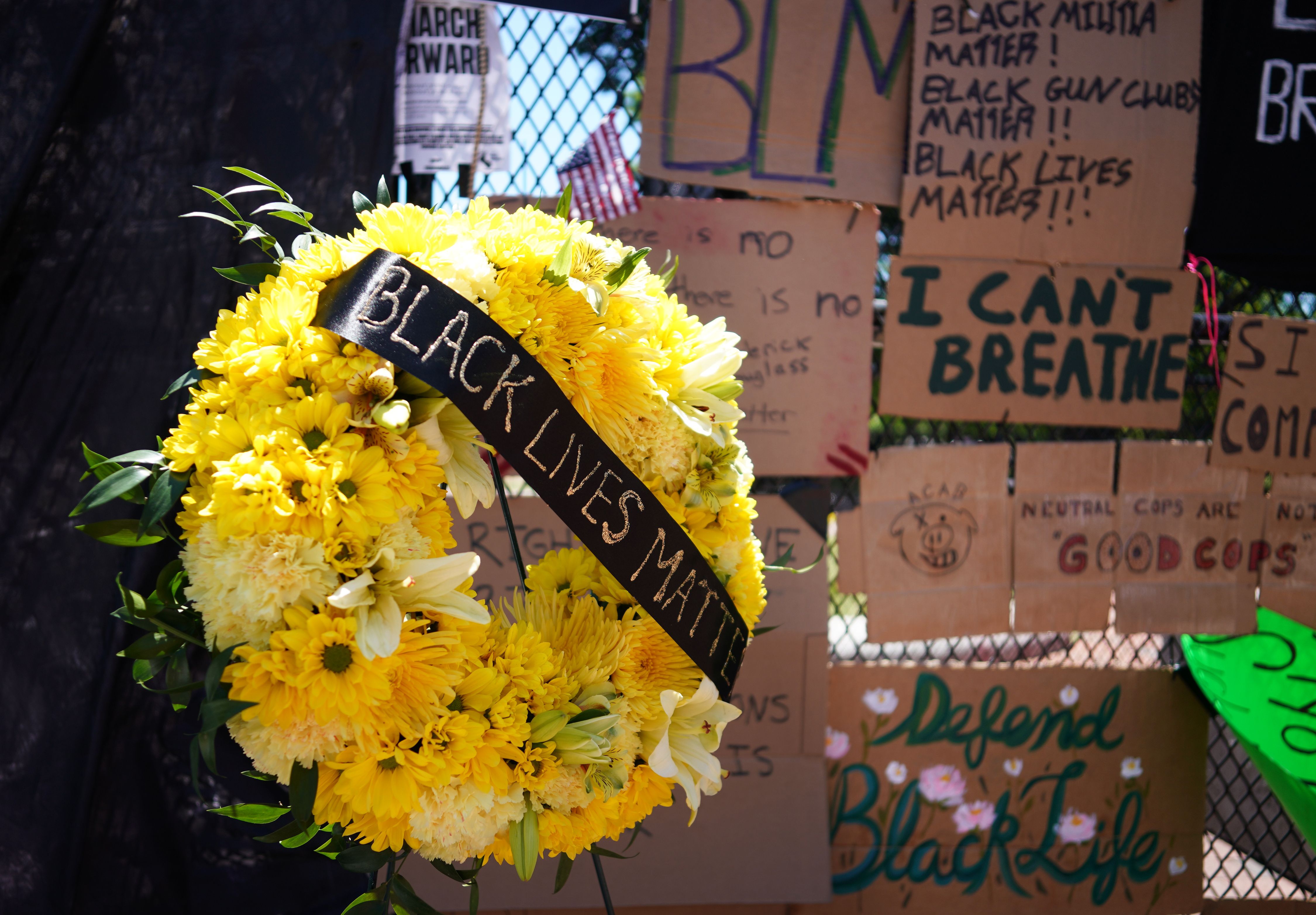
The fence erected outside the White House by President Donald Trump to keep demonstrators at least 600 feet away has been transformed into a memorial wall for George Floyd and a protest site demanding racial and social justice.
The wall has been covered in posters commemorating the lives of Floyd, Breonna Taylor, Trayvon Martin, Emmett Till, and other African Americans killed by the police or in other racially charged murders. Other posters bears slogans criticizing the president, or demanding that police departments be defunded.
“It’s like the whole nation is crying, and this whole fence is crying,” Kai Gamanya, who contributed a painting of a clenched fist, told NPR. “And if you were to back up and see it from beginning to end, it’s nothing but posters from all the way down.”
The protest art serves as beautiful makeshift tribute to victims of racial violence and police brutality, and a powerful rallying cry for the Black Lives Matter movement.
Trump, who campaigned on the promise of building a wall on the Mexican border, had 1.7 miles of fencing put around the White House, preventing anyone from entering Lafayette Park and other open spaces around the White House, where demonstrators have protested for more than 100 years.
The eight-foot-tall fences were put up after law enforcement last week used tear gas to clear protestors out of the area so that Trump could pose for a photo op with a bible at nearby St. John’s Episcopal Church.
The barriers will stay in place through at least June 10, and are part of “an effort to maintain the necessary security measures surrounding the White House complex, while also allowing for peaceful demonstration,” according to a Secret Service press release.
“It’s a sad commentary that the house and its inhabitants have to be walled off,” DC mayor Muriel Bowser said at a recent press conference. “We should want the White House opened up for people to be able to access it from all sides.”
See more photos of the protest art below.
People look at posters and placards on the security fence on the north side of Lafayette Square, near the White House, in Washington, DC on June 8, 2020. Photo by Mandel Ngan/AFP/Getty Images.
Messages are attached to the security fence on the north side of Lafayette Square, near the White House, in Washington, DC on June 8, 2020. Photo by Mandel Ngan/AFP/Getty Images.
A woman and child walk past messages attached to the security fence on the north side of Lafayette Square, near the White House, in Washington, DC on June 8, 2020. Photo by Mandel Ngan/AFP/Getty Images.
Messages are attached to the security fence on the north side of Lafayette Square, near the White House, in Washington, DC on June 8, 2020. Photo by Mandel Ngan/AFP/Getty Images.
Messages are attached to the security fence on the north side of Lafayette Square, near the White House, in Washington, DC on June 8, 2020. Photo by Mandel Ngan/AFP/Getty Images.
Messages are attached to the security fence on the north side of Lafayette Square, near the White House, in Washington, DC on June 8, 2020. Photo by Mandel Ngan/AFP/Getty Images.
People look at posters and placards on the security fence on the north side of Lafayette Square, near the White House, in Washington, DC on June 8, 2020. Photo by Mandel Ngan/AFP/Getty Images.
Messages are attached to the security fence on the north side of Lafayette Square, near the White House, in Washington, DC on June 8, 2020. Photo by Mandel Ngan/AFP/Getty Images.
The steel fence at Lafayette Park has become a makeshift memorial at 16th street after “Defund The Police” was painted on the street near the White House on June 08, 2020 in Washington, DC. After days of protests in DC over the death of George Floyd, DC Mayor Muriel Bowser has renamed that section of 16th street “Black Lives Matter Plaza.” Photo by Tasos Katopodis/Getty Images.